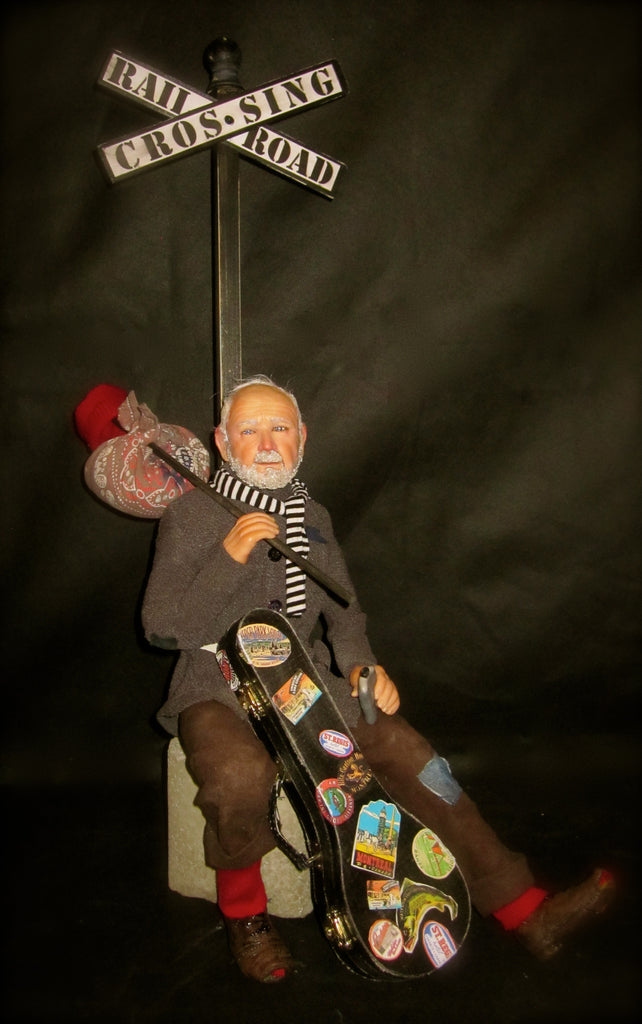
A year ago the Orange Art Gallery challenged it’s artists to create works of art based on the theme “The Railway Crossing”. The Orange Art Gallery is in a 120 year old historic building that used to house the bank for the CN Rails and is now where the new light rail connects. The exhibit runs from July 6th to August 13th. I created two sculptures for this exhibit. One of them was inspired by a Canadian song from the Littlest Hobo television series, “Maybe Tomorrow”. This is my sculpture, “Riding the Rails”.
Many people think of a Hobo as a homeless vagrant, but originally they were actually a man or woman who worked as they traveled. Hobos came from all walks of life and decided to ride the rails and live outside as an alternative. As a matter of fact, Hobos organized themselves and formed a union during the mid 1800’s as a way to catch rides with friendly conductors by showing them the union card.
The number of Hobos increased after the Second World War and then the Great Depression hit. Hobos were then considered penniless wanderers. Without money men hopped onto trains and “rode the rails”, criss-crossing the country in a frustrating search for work and food. Illegal and very dangerous, thousands of hobos were killed or seriously injured jumping on or off freight cars. Some hobos laid boards across the brake rods under the railway cars. They could ride on these boards hidden from view – a very dangerous, noisy and uncomfortable ride. Most rode inside or on top of boxcars on freight trains.
Hobos carried a bindle, a stick with a cloth or blanket tied around one end for holding items. Supported over the shoulder it offered a comfortable grip and doubled as a weapon if needed. A stereotypical symbol for anyone running away from home, Norman Rockwell used it in his 1958 illustration “The Runaway”.
The figure in “Riding the Rails” measures 16″ high x 14″ x 10″ deep. It’s sculpted from polymer clay and textiles. The whole composition including the Railroad Crossing sign is 25″tall. The sign is embedded into a cement base which is the resting spot for this weary traveller. His old weathered banjo case is plastered with stickers from some of the stops on his journey across Canada where he played for a meal or a place to sleep. In his left hand he holds a flask of heat to help him get through the cold nights.
“Maybe tomorrow, I’ll want to settle down, Until tomorrow, I’ll just keep moving on.”
